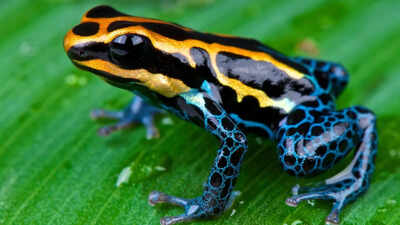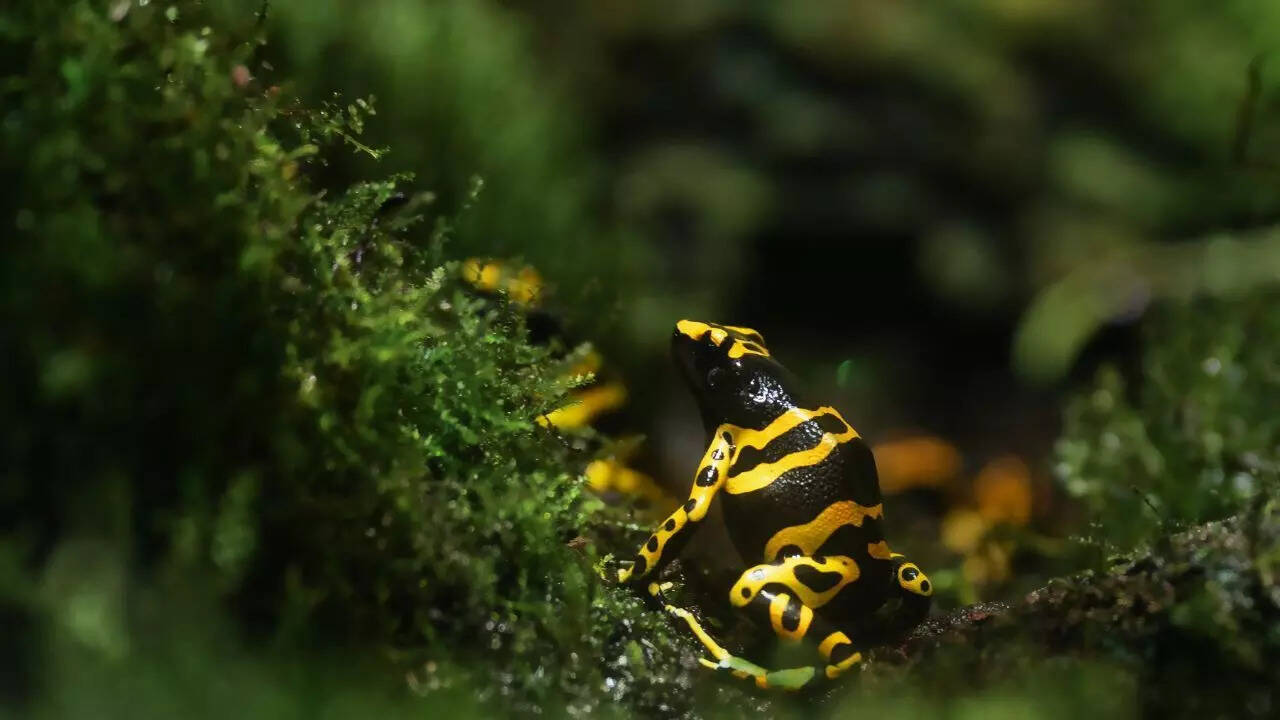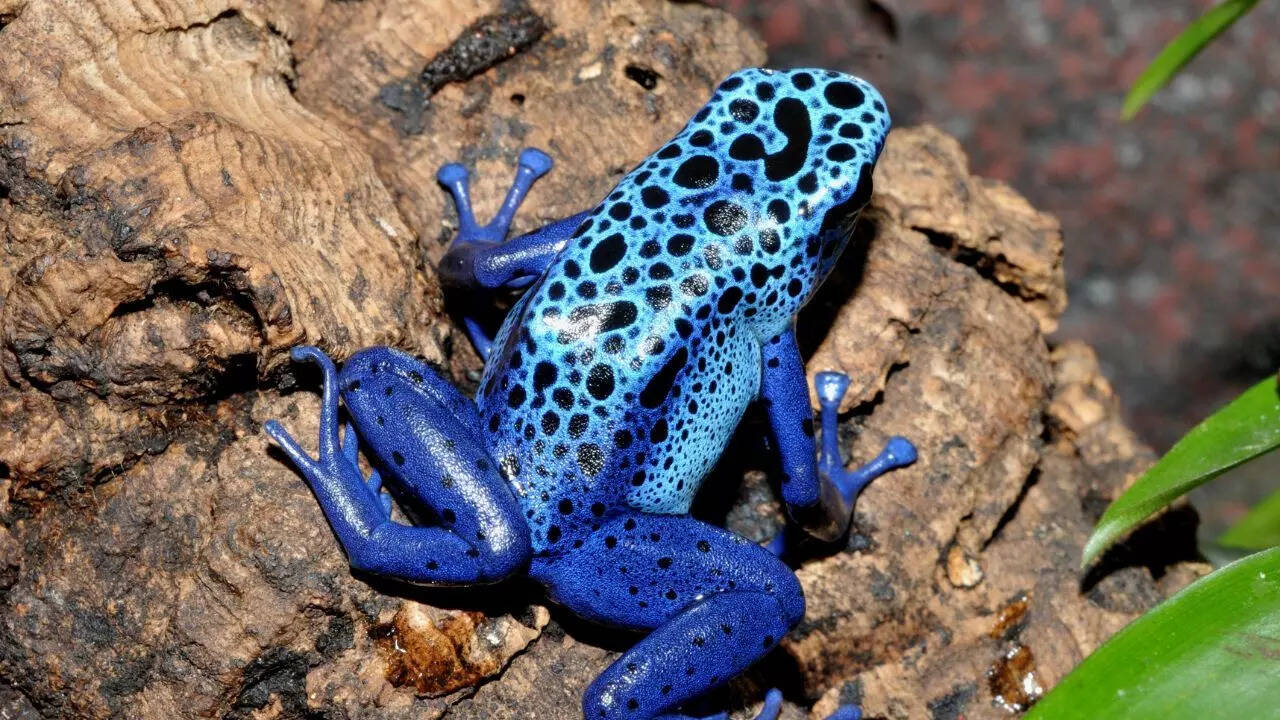ARTICLE AD BOX

Poison dart frogs are often recognised for their bright colours and potent toxins, earning them a fierce reputation in the animal kingdom. Yet behind this dangerous exterior lies one of nature’s most surprising stories of parental devotion.
Found throughout the rainforests of Central and South America, these tiny amphibians demonstrate a level of family care that is rare among frogs, especially from the males. While most amphibians leave their eggs shortly after reproduction, poison dart frogs do the opposite. Fathers guard the eggs, transport tadpoles on their backs, and ensure each offspring is placed in a safe, sheltered nursery. In some species, even the mothers return repeatedly to feed their young.
This remarkable teamwork reveals that, despite their size and toxicity, poison dart frogs are some of the most attentive parents in the wild.
Why male poison dart frogs are among nature’s most dedicated dads

Poison dart frogs, found across the rainforests of Central and South America, have gained fame due to the potent toxins on their skin. However, their family life reveals a much gentler side, especially among males. Unlike many other amphibians that abandon their eggs soon after fertilisation, male poison dart frogs take an active role in courtship, egg care, and tadpole transport.
Breeding can occur throughout the year. Males attract females by producing short, chirping calls. If the female is interested, she climbs onto the male’s back and lays a small clutch of eggs, usually no more than ten. The male fertilises them externally and carefully selects a safe, damp spot to keep the developing embryos protected. For 14 to 18 days, he guards the eggs, ensuring that the environment remains moist so they don’t dry out.This level of involvement is rare in the amphibian world. While most frogs leave their eggs to fate, poison dart frog fathers stay close, protect the clutch, and prepare for the next phase of care: transporting their young.
Tadpole transport: The father carries each baby to safety

When the eggs hatch, the tiny tadpoles climb onto their father’s back, attaching themselves using a mucus-like secretion that keeps them secure. One by one, the male travels, sometimes climbing metres up trees, to deliver each tadpole into a safe pool of water.The preferred nursery is the water-filled centre of bromeliad plants, which grow along tree trunks and branches. Each tadpole is placed in a separate water reserve, ensuring that they do not compete with or prey on one another. The male then continues to monitor the nurseries for eight to 12 weeks, checking water levels and ensuring that each tadpole remains safe.This journey is repeated for every tadpole in the clutch. It is physically demanding and occurs multiple times during the breeding season, demonstrating why the poison dart frog is considered one of the most attentive amphibian fathers in nature.
A unique feeding strategy: Females nourish tadpoles with nutrient-rich eggs
Although the male guards and transports the tadpoles, he cannot feed them, and young tadpoles are unable to hunt. Instead, they rely on a remarkable parenting strategy. When tadpoles communicate hunger by wriggling vigorously, the male begins calling to attract a female. If a female responds, she follows him to the nursery.Once she reaches the bromeliad, the female lays an unfertilised egg directly into the water, providing the tadpole with its primary food source.
This is not a one-time event; she returns regularly to continue feeding the growing tadpole. The unfertilised eggs also contain alkaloids from her diet, which begin the process of toxin accumulation. The poisons are stored in the tadpole's skin and later become a defensive weapon against predators.
This early toxicity is what helps give adult poison dart frogs their bright warning colours and their reputation as one of the most toxic animals on Earth.Poison dart frogs demonstrate one of the most remarkable parenting systems in the animal kingdom. According to research published in the journal Behavioral Ecology, parental care in poison dart frogs evolved as a survival advantage, with fathers protecting vulnerable tadpoles.Combined with the female’s specialised feeding of unfertilised eggs, this partnership ensures that each tadpole receives both nutrition and the toxins necessary for protection. Their unusually long lifespan, especially for such small amphibians, highlights how effective this early care is. From the discovery of species like Ranitomeya hwata to their extraordinary parental teamwork, poison dart frogs prove that even tiny creatures can display exceptional dedication and complexity.Also Read: Largest tuna in the world ever caught: Atlantic bluefin record, size, and facts

 1 hour ago
6
1 hour ago
6









 English (US) ·
English (US) ·